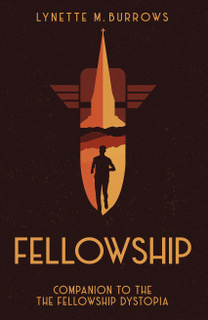Happy (St.) Valentine’s Day! by Carol L. Wright
February 13, 2020 by Bethlehem Writers Group in category From a Cabin in the Woods by Members of Bethlehem Writers Group tagged as Research for Writers, Researching Historical Fiction, writing
Tomorrow is Valentine’s Day—the day for lovers—and the least popular day of the year for single folks whose lack of a partner becomes acutely apparent.
For a mystery writer, the day offers all sorts of inspiration. Love or lost love is, after all, one of the prime motivators for murder-most-foul. What mystery writer hasn’t used it a time or two—at least as a red herring?
But even more interesting to this mystery writer is the origin of St. Valentine’s Day. While it is ostensibly the feast day for a Roman Catholic saint named Valentine who died on February 14th, the record is not so clear on exactly who, why, or even when a man named Valentine became the patron saint of love, young people, and happy marriages.

By blackfish – Own work, CC BY-SA 3.0,
Legend holds that St. Valentine died around 269 CE. This was well before the Edict of Milan legalized the Christian church in 313, so records from that time are spotty at best. The Christian church was still being persecuted by Rome and much of what we know of its early history comes from oral tradition rather than contemporaneous records. So, in mystery writers’ terms, we don’t really know for sure whodunnit!
According to history.com, there are at least two viable candidates for the honor of being the mortal who became St. Valentine. They lived around the same time—the reign of Emperor Claudius II of Rome (214-270 CE). One was a simple priest. The other was the Bishop of Terni, Narnia, and Amelia. Even the church isn’t 100% sure which it was.
Stories abound about the saint and are accepted as truth—or truth adjacent—for the purposes of celebrating the feast day.
The official St. Valentine, according to the Vatican (catholic.org), died in 269 CE. He was an Italian priest (or bishop?) who, according to legend, proved the power of Christ by restoring the sight of the blind daughter of a judge (or jailer?) who had imprisoned him. As a result, Valentine was awarded his freedom. But it wasn’t long before Valentine was again arrested. His crime? Converting people, marrying couples (starting to see the connection to love and happy marriages?), and assisting Christians being persecuted by Rome. His motive for marrying couples might have been less about romance and more about pragmatism. Apparently, once married, men were excused from going to war. That’s a pretty big incentive.
He went too far when he tried to convert Emperor Claudius II, who ordered Valentine to renounce his faith or be put to death. He chose the latter and the death sentence was carried out in 269 CE (or perhaps 270, or 273, or 280 . . .) He is believed to have been buried on the Via Flaminia north of Rome, perhaps leaving a note behind for the girl whose blindness he cured, signed “Your Valentine.” Hmmm. Sound familiar?
Both the bishop and the priest are said to have performed similar miracles, met similar fates, died at a similar time, and buried at a similar place. No wonder we’re confused. Some speculate that the priest and the bishop were, in fact, one and the same.
But wait. Wikipedia tells us that there is at least one more candidate—another martyr who died on the same day in Africa. Not much else is known about this Valentine, but since they all are recorded as dying on February 14, who’s to say which is the St. Valentine?
But if we can’t be certain of which Valentine it was, or what year he died, how can we know that he died on February 14th?
As with other Christian holidays, St. Valentine’s day might have been placed in mid-February to help ease pagans’ transition to Christianity, supplanting the Roman Festival of Lupercalia which, according to thoughtco, was celebrated on February 13-15, and was said to purify the City of Rome and usher in a time of health and fertility.
Another theory is that since birds mate in mid-February, the patron saint of lovers feast day was placed then. Tennyson said it best in “Locksley Hall”: In the spring, a young man’s fancy lightly turns to thoughts of love.
The truth about Valentine will never be settled. When, in 496 CE, Pope Gelasius I first included Valentine’s name among those of other saints, he admitted the list was of people whose acts (miracles? good works? martyrdom?) were “known only to God.” No new evidence has turned up since to settle the question.

By Dnalor 01 – Own work, CC BY-SA 3.0
In 1969, the Roman Catholic church, perhaps due to this ambiguity, ceased requiring celebration of Valentine’s feast day, but it still counts him among the saints.
Whoever he was in life, St. Valentine is known, not only as the patron saint of love, happy marriages, and young people, but also of engaged couples, beekeepers, epilepsy, fainting, greetings, travelers, and plague (yikes!). Only a few of these mesh with our current, secular view of Valentine’s Day, but with selective editing, florists, card companies, and chocolatiers have ample excuse to make the most of this bright spot in the winter calendar.
So, who will be your Valentine? Let’s hope they are not shrouded in as much mystery as St. Valentine!
0 0 Read more
Telephone Booths in the 1950s by Will Zeilinger
February 3, 2019 by Janet Elizabeth Lynn and Will Zeilinger in category Partners in Crime by Janet Elizabeth Lynn & Will Zeilinger tagged as Fads, Researching Historical Fiction, the 1950s
Ah, the convenience of a smartphone. Almost all of us have one (or more) of these tiny mobile computers and telephones, in one.
Believe it or not, the first mobile telephone call from a hand-held device wasn’t made until April 3, 1973. Cellular phones and smartphones were still decades in the future.
Now, let’s take a look back to the mid-1950s and see what calling home entailed.

If you were not at home, the first order of business was to find a telephone, and you had better have had a pocketful of change because you paid to talk.
In the U.S., one could find “pay phone” inside a telephone booth or just “phone booth” for short, as they were called, on many street corners and in most commercial establishments. On the street, the ubiquitous phone booth featured a folding glass door that afforded some privacy and protection from the elements. They were not air-conditioned, but when you stepped inside and closed the door, an overhead light would come on. That feature was especially helpful at night. By the mid-1950s, most were upgraded from a wood and glass structure to a weatherproof glass and aluminum booth that was large enough for one (maybe two, if you were friends).
If you’re too young to have seen one in person, you’ve no doubt, seen them in old movies and TV shows.

They were found inside almost any hotel, train station, bank, restaurant or office building. You would have seen rows of wooden phone booths lining a wall somewhere near the entrance. Many of them had a seat inside for long conversations. During breaks between the action at conventions or meetings, people would line up to use the half dozen or so telephones in larger hotels, and in smaller hotels, there may have been two or three.
Today many hotels and convention spaces have mysterious empty areas that will cause the visitor to wonder the reason behind the wasted space. The answer is telephone booths once stood in those places before they were removed because they were no longer needed.

To make a call you would first deposit a nickel or dime in one of the round holes at the top. “Dial” it on the rotary dial . . . one digit at a time. A live telephone operator would come on the line and tell you how much money to put in, based on the number. If you didn’t know the person’s number, you’d look up the person by name from the telephone directory book, suspended under the phone. If you needed to make a long distance call, the live operator would handle that for you as well.

Since the 1950s were part of a decade of fads, one popular fad was “Phone Booth stuffing.” The point of this was to see how many people would fit into a phone booth designed for one person. From what I could learn, the record for cramming the most people into a standard sized telephone booth was 25. This was accomplished by a group of South African college students.
Too many people? You want a little privacy when you make a phone call? In today’s culture, it is becoming increasingly difficult to find privacy in a public place when you need to have a conversation (except maybe, in your car) I’m sure you’ve been in a restaurant or standing in a checkout line, and had to endure someone’s inane conversation right behind you or next to your ear. Well—good news! Some establishments are resurrecting telephone booths by providing an enclosed compartment with a comfortable seat and a door (see phone booth) for people to make or take private cell calls without having to go out to the parking lot. What goes around,comes around.
2 0 Read more
Affiliate Links
A Slice of Orange is an affiliate with some of the booksellers listed on this website, including Barnes & Nobel, Books A Million, iBooks, Kobo, and Smashwords. This means A Slice of Orange may earn a small advertising fee from sales made through the links used on this website. There are reminders of these affiliate links on the pages for individual books.
Search A Slice of Orange
Find a Column
Archives
Featured Books
THE GOOD GIRL PART FOUR
Guess what I did on my vacation…eloped with my boss.
More info →UNEXPECTED LOVE
I can't believe I fell in love with my husband's best friend.
More info →TO CATCH A TREAT
When a Dog-Snatching Scheme Leads to Murder, Carrie Must Sniff Out the Truth.
More info →Newsletter
Contributing Authors
Search A Slice of Orange
Find a Column
Archives
Authors in the Bookstore
- A. E. Decker
- A. J. Scudiere
- A.J. Sidransky
- Abby Collette
- Alanna Lucus
- Albert Marrin
- Alice Duncan
- Alina K. Field
- Alison Green Myers
- Andi Lawrencovna
- Andrew C Raiford
- Angela Pryce
- Aviva Vaughn
- Barbara Ankrum
- Bethlehem Writers Group, LLC
- Carol L. Wright
- Celeste Barclay
- Christina Alexandra
- Christopher D. Ochs
- Claire Davon
- Claire Naden
- Courtnee Turner Hoyle
- Courtney Annicchiarico
- D. Lieber
- Daniel V. Meier Jr.
- Debra Dixon
- Debra H. Goldstein
- Debra Holland
- Dee Ann Palmer
- Denise M. Colby
- Diane Benefiel
- Diane Sismour
- Dianna Sinovic
- DT Krippene
- E.B. Dawson
- Emilie Dallaire
- Emily Brightwell
- Emily PW Murphy
- Fae Rowen
- Faith L. Justice
- Frances Amati
- Geralyn Corcillo
- Glynnis Campbell
- Greg Jolley
- H. O. Charles
- Jaclyn Roché
- Jacqueline Diamond
- Janet Lynn and Will Zeilinger
- Jaya Mehta
- Jeff Baird
- Jenna Barwin
- Jenne Kern
- Jennifer D. Bokal
- Jennifer Lyon
- Jerome W. McFadden
- Jill Piscitello
- Jina Bacarr
- Jo A. Hiestand
- Jodi Bogert
- Jolina Petersheim
- Jonathan Maberry
- Joy Allyson
- Judy Duarte
- Justin Murphy
- Justine Davis
- Kat Martin
- Kidd Wadsworth
- Kitty Bucholtz
- Kristy Tate
- Larry Deibert
- Larry Hamilton
- Laura Drake
- Laurie Stevens
- Leslie Knowles
- Li-Ying Lundquist
- Linda Carroll-Bradd
- Linda Lappin
- Linda McLaughlin
- Linda O. Johnston
- Lisa Preston
- Lolo Paige
- Loran Holt
- Lynette M. Burrows
- Lyssa Kay Adams
- Madeline Ash
- Margarita Engle
- Marguerite Quantaine
- Marianne H. Donley
- Mary Castillo
- Maureen Klovers
- Megan Haskell
- Melanie Waterbury
- Melisa Rivero
- Melissa Chambers
- Melodie Winawer
- Meriam Wilhelm
- Mikel J. Wilson
- Mindy Neff
- Monica McCabe
- Nancy Brashear
- Neetu Malik
- Nikki Prince
- Once Upon Anthologies
- Paula Gail Benson
- Penny Reid
- Peter Barbour
- Priscilla Oliveras
- R. H. Kohno
- Rachel Hailey
- Ralph Hieb
- Ramcy Diek
- Ransom Stephens
- Rebecca Forster
- Renae Wrich
- Roxy Matthews
- Ryder Hunte Clancy
- Sally Paradysz
- Sheila Colón-Bagley
- Simone de Muñoz
- Sophie Barnes
- Susan Kaye Quinn
- Susan Lynn Meyer
- Susan Squires
- T. D. Fox
- Tara C. Allred
- Tara Lain
- Tari Lynn Jewett
- Terri Osburn
- Tracy Reed
- Vera Jane Cook
- Vicki Crum
- Writing Something Romantic
Affiliate Links
A Slice of Orange is an affiliate with some of the booksellers listed on this website, including Barnes & Nobel, Books A Million, iBooks, Kobo, and Smashwords. This means A Slice of Orange may earn a small advertising fee from sales made through the links used on this website. There are reminders of these affiliate links on the pages for individual books.















































